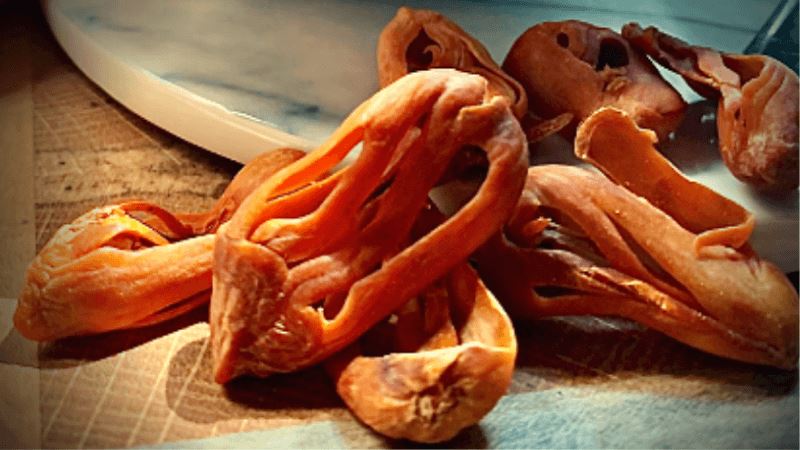What Is Mace Blade and How Is It Used In The Kitchen?
What is mace blade
Mace blade is an intensely fragrant spice found in a wide array of recipes worldwide, yet is infrequently found in most home spice cabinets. Few home chefs use mace on a routine basis as they do with other ingredients like salt, pepper, or dried herbs and far fewer truly know what mace really is or how they should use it. We’re here to shine some light on one of our favorite spices and ensure it gets the credit it really deserves.
Is mace blade a seed or a fruit?
Mace blade is not a seed, nor is it a fruit; it is the area between. It is a protective coating found around the nutmeg seed, which keeps it separate from the flesh of the fruit of a tropical evergreen tree known as the Myristica fragrans, or nutmeg tree.
What does mace blade look like?
As previously mentioned, mace blade is a protective coating found around the nutmeg seed. Not all seeds have these protective coatings and when they do, they are more notably referred to as arils. When most people think of arils, the first thing that comes to mind is a pomegranate. The arils are the part of the pomegranate that one eats; it’s sweet and juicy, but one has to be careful when chewing them to release those juices or they’ll find tiny seeds stuck in their teeth. The aril surrounding nutmeg seeds is much different than that. It is fleshy and wrapped tightly around the seed, though it doesn’t cover it completely. In its dried form, it is often described as lace-like. When it is fresh and still attached to the seed, though, it is bright red and appears to be almost brain-like in appearance.
That bright red, brain-like membrane is stripped from the seed by hand and stretched flat to dry. The end result is rust orange, oblong, web-like pieces that usually range in size from about ¾-inch to 1 ½-inches.
Are nutmeg and mace the same thing?
Nutmeg and mace blade are not the same, though they are both parts of the same plant—Myristica fragrans. Nutmeg is the hard seed inside of the fruit of this tree and is separated from the fruit wall by the mace blade. Just as they are different parts of the same plant, they also possess similar flavor profiles but of varying degrees. With mace being described as possessing higher levels of sweetness and a more subtle intensity of spice. Mace and nutmeg are each preferred in different recipes, but in a pinch, feel free to use them interchangeably—just make sure you adjust the amounts to achieve the desired result of the dish.
How is blade of mace used in cooking?
Whether in whole form or dried, mace is incredibly easy to use in the kitchen and is found in a wide variety of recipes, but many home chefs are intimidated by their unfamiliarity with it. Let’s get some of those insecurities out of the way by answering some questions.
Is it better to use whole or ground mace blade?
As with most spices, starting with the whole version will ensure you get the best flavor; and you will be able to use less to achieve the desired result. Once mace is ground, those raw essential oils, the essence of the spice, will begin to evaporate and much of the flavor will be lost. It just takes moments longer to fresh grind whole spices using a clean coffee or spice grinder or a mortar and pestle.
What dishes typically contain mace?
Mace frequents savory dishes around the world but is predominantly found in Asian, Moroccan, and Caribbean cuisines. In western cultures, it is more notable in baked goods and sweets; especially those containing other warming spices like cinnamon, star anise, and cloves. Most bakers wouldn’t dream of making pumpkin pie, donuts, or oatmeal cookies without including this sultry spice.
Another popular holiday recipe that we wouldn’t dream of making without mace is mulled wine. Check out one of our favorite mulled wine recipes here!
But just because mace is most prominently found in sweet dishes, doesn’t mean you should leave it out of your savory recipes. Try it in a Caribbean spice rub for seafood. Make your own Garam Masala seasoning blend and add it to butter chicken or stews, or purpose it for some mace-scented roasted root vegetables for a unique side dish everyone will love!







Slofoodgroup
Author